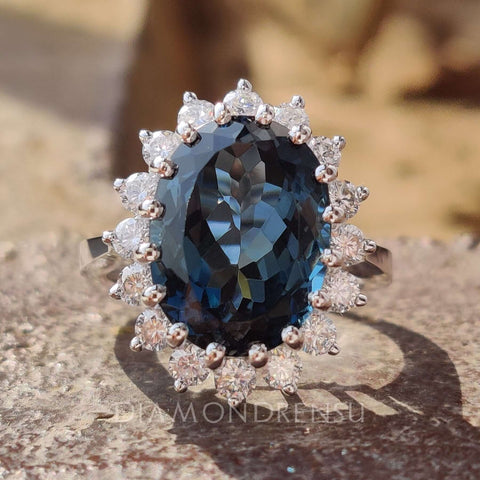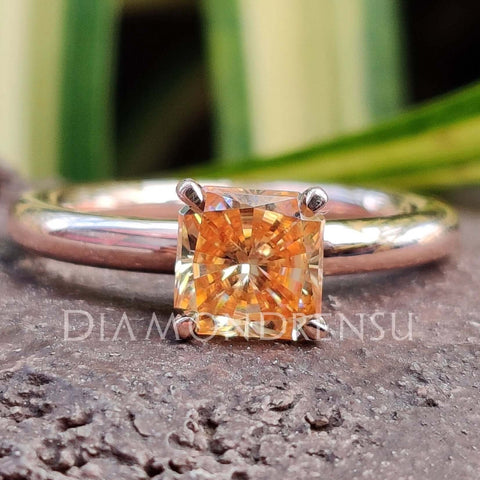
Alexandrite Stone Meaning
Alexandrite is a rare and fascinating gemstone known for its remarkable optical properties. It is a variety of chrysoberyl and is distinguished by its unique ability to change color depending on the lighting. In daylight, you will observe that it displays a mesmerizing green to bluish-green color, but under incandescent light, it transforms into a soft shade of red to purplish-red. This chameleon-like behavior is known as the “alexandrite effect” and has contributed significantly to the stone's allure and value in the gem market.
This gemstone was first discovered in the Ural Mountains of Russia in the 19th century and named after Tsar Alexander II. As you explore the significance of alexandrite, you'll find that it is not only sought after for its color-changing ability but also for its assumed metaphysical properties. Many believe that the stone embodies the essence of balance and harmony, and it is often associated with luck, prosperity, and personal growth.
Your quest for a piece of alexandrite may be a challenging one due to its rarity. The original Russian deposits have almost been depleted, making the stone quite scarce. Today, other sources include Brazil, Sri Lanka, and East Africa, but high-quality alexandrites from these locations remain exceptional. Whether for its captivating visual properties or its symbolic meanings, owning an alexandrite stone is synonymous with having a unique piece of Earth’s natural splendor.
Historical Significance and Origin
The allure of alexandrite is as much tied to its remarkable color-changing properties as it is to its rich history, which dates back to imperial Russia in the 19th century and includes a royal namesake.
Discovery and Naming
Alexandrite was first discovered in the emerald mines near the Ural Mountains in Russia in the 1830s. Your appreciation for this gemstone may deepen when you learn that it was named in honor of the then-future Czar Alexander II. The timing of the discovery on the young prince Alexander's birthday and the colors of the stone mirroring the Russian national military colors of green and red contributed to its name and initial popularity.
Historical Lore and Uses
In 19th century Russia, alexandrite was revered not only for its rarity and the unique phenomenon of color change, which has traditionally symbolized luck, but also for its association with royalty. Folklore suggests that the stone was considered a good omen and was held in high esteem as a stone of very good fortune. When you consider the historical context, the stone's purported ability to strengthen intuition, creativity, and imagination seems consistent with the mystical attributions of gemstones during this era.
Geographical Sources

Alexandrite, with its remarkable color-changing properties, originates from various locations around the world known for their rich mineral deposits. Each geographical source imparts unique characteristics to the stones it produces.
Primary Deposits
In the Ural Mountains of Russia, alexandrite was first discovered in the emerald mines near the Tokovaya River. These Russian stones set the standard due to their vibrant color change from green in daylight to ruby red in incandescent light. Your alexandrite's ability to exhibit striking hues is significantly influenced by its origin here.
Moving across the globe to Brazil, notable quantities of alexandrite have been unearthed. The Brazilian gems tend to be larger and display a less pronounced color change, but they are valued for their clarity and size.
In the dense jungles of Sri Lanka, alexandrite crystals are found amongst the sapphire and ruby deposits. While the color change might be less dramatic than the Russian counterpart, the stones often have a distinctive bluish-green shade in daylight.
Zimbabwe and Madagascar represent important sources in the African continent, offering alexandrite stones that emerge from their primary mineral deposits, often within the proximity of emerald mines.
Secondary Deposits
Secondary deposits include areas like India, where alexandrite can be found within riverbeds as alluvial deposits. The Indian varieties may display a dual-color phenomenon but are typically not as vivid as those from the primary sources.
In Tanzania, near Lake Manyara, alexandrites are obtained from secondary alluvial deposits with characteristics similar to the original Russian stones, though smaller in size.
It's important to note that the geographical source of an alexandrite stone can affect its value and rarity. Stones from traditional primary deposits, especially those from the Ural Mountains, are often considered more valuable due to their historical significance and exceptional color-change qualities. Secondary deposits provide additional sources for this gem, but the stones tend to vary more in terms of quality and color change.
Physical and Chemical Properties
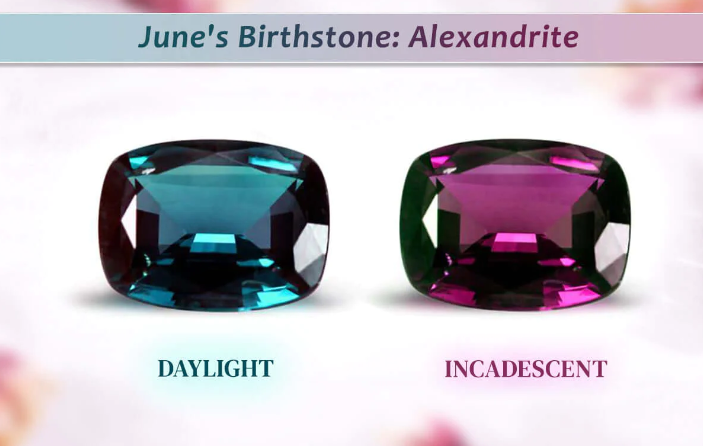
| Property | Description |
|---|---|
| Mineral Class | Chrysoberyl |
| Color Change | Exhibits a remarkable color change, appearing green in daylight and red under incandescent light |
| Hardness | 8.5 on the Mohs scale |
| Specific Gravity | 3.70 - 3.78 |
| Refractive Index | 1.746 - 1.755 |
| Birefringence | 0.009 |
| Transparency | Transparent to translucent |
| Chemical Formula | BeAl2O4 |
| Crystal System | Orthorhombic |
| Origin | Originally discovered in the Ural Mountains, Russia |
Alexandrite, a fascinating gemstone, earns its reputation from distinctive color-changing abilities and robust composition. As you explore its attributes, remember that its unique features are due to its complex chemical composition and interaction with light.
Composition
Alexandrite is a variety of chrysoberyl, which is a beryllium-aluminum oxide mineral. While the basic formula for chrysoberyl is BeAl2O4, the presence of chromium ions in the structure gives alexandrite its characteristic hues. Elements like titanium and iron could also be present and influence its color.
Color and Light Interaction
What sets alexandrite apart is its remarkable color change phenomenon; it can appear green in daylight or fluorescent light and shift to red under incandescent light. This effect is due to the complex way alexandrite absorbs and reflects light. The stone exhibits strong pleochroism, showing different colors when viewed from different angles—typically green, red, and yellowish-green.
Durability and Care
Your alexandrite is quite durable, ranking 8.5 on the Mohs scale. The refractive index of alexandrite is high, contributing to its brilliant luster and making it a prized choice for jewelry. Despite its hardness, it requires proper care to maintain its beauty; avoid harsh chemicals and extreme temperatures, and clean it with mild soap and water.
Gemological Significance
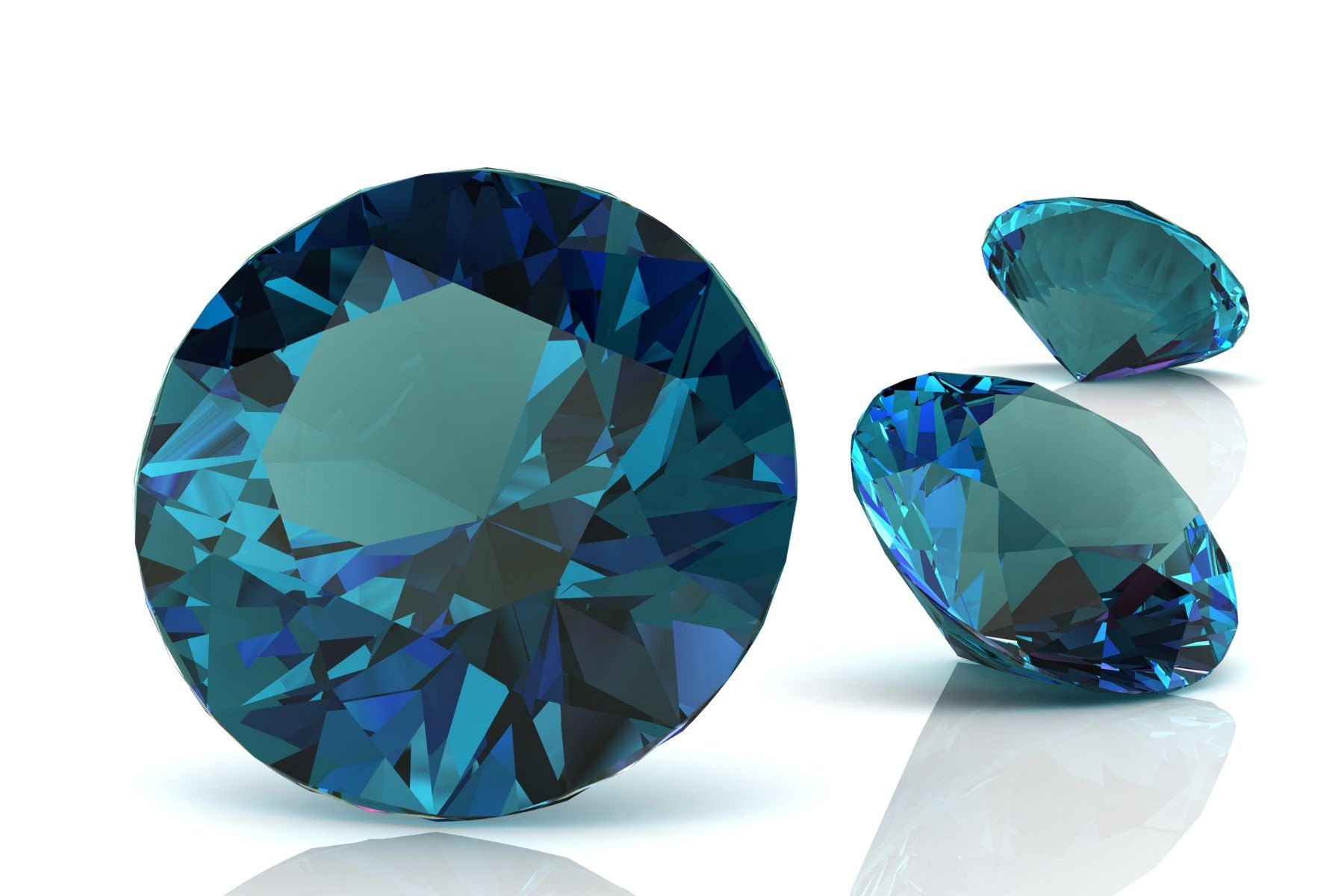
Alexandrite stands out in the gemological world due to its rarity and unique color-changing properties. As you explore this gemstone's significance, you'll understand why it's highly prized and how it compares to other well-known gemstones.
Rarity and Value
Alexandrite is one of the rarest gemstones on the market, showing a distinct color change from green to red, akin to a traffic light. Its value is often on par with top-tier gems like diamonds, rubies, and emeralds. The more pronounced the color change, the more valuable the stone is considered. Rarity contributes significantly to its expense; fine quality alexandrites over one carat are rarer than diamonds, which elevates their worth considerably.
Gemstone Comparisons
When compared to other gemstones, alexandrite is unique. Unlike corundum-based stones such as sapphire and ruby which are admired for their singular vibrant hues, alexandrite boasts a chameleon-like ability to change from a lush green in daylight to a rich red in incandescent light. This remarkable feature sets it apart as it embodies two coveted colors traditionally seen in separate gemstones. While not as hard as diamond—alexandrite has a Mohs hardness of 8.5—it is nonetheless a durable stone suitable for daily wear.
Cultural and Symbolic Meanings

Alexandrite is a gemstone shrouded in mystery and steeped in rich symbolic value. As your guide through the maze of its meanings, let's explore how it connects to astrology and mythology, and how it is believed to influence healing and wellness.
Astrological Associations
Gemini: Alexandrite is closely linked to those born under the Gemini sign, with some considering it a modern birthstone for the month of June. Your Gemini traits of adaptability and duality resonate well with the stone's color-changing qualities — reflecting your multifaceted nature.
- Birthstone: Alexandrite is often associated with June birthdays, marking it as a stone that brings joy and good fortune.
- Energy and Strength: It's believed that alexandrite channels positive energy, potentially bolstering your inner strength.
Mythology and Healing
Mythologically, alexandrite was once thought to bring luck and balance in the lives of the wearer. It honors the balance between the physical and spiritual, offering clarity and intuition which help in personal creativity.
- Healing Properties: Alexandrite is credited with various metaphysical properties, including improving emotional well-being.
- Balance and Clarity: Its purported ability to strengthen intuition might provide you with the balance needed to navigate life's complexities.
- Prosperity and Abundance: Carrying alexandrite may invite prosperity and abundance, amplifying your ability to manifest desires.
Through its connection to love and good fortune, alexandrite serves as a reminder of the joy in transformation and adaptability. The stone's reputed healing properties and metaphysical properties suggest a link between its physical beauty and the non-material pursuit of wellness and prosperity.
Practical Aspects and Usage
Alexandrite is a captivating gem known for its unique color-changing ability, offering both aesthetic appeal and symbolic significance in various applications. Recognized as a crown chakra stone, it holds a special place in jewelry and significant life events.
Jewelry and Fashion
Alexandrite, with its remarkable colour change from green in daylight to red in incandescent light, is a highly sought-after feature in jewelry. Its ability to shift color not only makes it a conversation piece but also allows it to complement a wide range of outfits and occasions. In terms of aesthetics, the ideal cut is crucial to enhance the stone’s color-changing properties. Most natural alexandrite stones are cut in traditional shapes that maximize the strength of the color change. When selecting alexandrite for personal use, consider both the intensity and the balance of the color transition which are indicative of the gem's quality.
- Natural vs. Synthetic: You'll find that natural alexandrite is a rare gemstone and significantly more valuable. Synthetic alexandrite is more accessible and provides a similar appearance at a more affordable price point.
- Care Tips: Be mindful of alexandrite's hardness, which makes it durable for everyday wear yet still requires care to prevent scratches or damage.
Special Occasions and Gifting
For those celebrating a wedding anniversary, especially the 55th, alexandrite is a meaningful gift, symbolic of long-lasting love and the magical ability to adapt and change through life's journey. Its rarity and the magic associated with its colour change make it an exceptional choice for a thoughtful and luxurious present.
- Anniversary: An alexandrite piece showcases thoughtfulness and knowledge of gemstone traditions, ideal for commemorating a significant milestone.
- Significance: The stone’s shifting hues resonate with themes of balance and harmony, making alexandrite gifts thoughtful for those who appreciate the deeper meanings behind gemstones.
Market Dynamics and Investment

In the realm of colored gemstones, alexandrite stands out for its rarity and the dynamic nature of its market. Your understanding of the factors that drive its pricing and tips for purchasing will serve as a compass in making informed investment decisions.
Pricing Factors
Rare gemstones like alexandrite command high prices, particularly due to their scarcity and the unique phenomena they display, such as color change. The value of alexandrite is greatly influenced by its quality, including clarity, cut, and the intensity of its color change; the more pronounced the color change, the more valuable the stone. Market demand for high-quality stones also contributes to pricing, heightened by the allure of owning something rare and steeped in wisdom.
- Origin: Alexandrite from Russia, displaying a dramatic color change, is often more expensive than those from newer deposits.
- Size: Larger stones are not just rare but gain exponential value as the carat weight increases.
Buying Tips
When considering alexandrite as an investment, pay close attention to the following:
- Authenticity: Ensure the stone is certified by a reputable gemological laboratory.
- Quality: Assess the stone for clarity and the vibrancy of the color change – ideally view it under different lighting conditions.
- Seller Reputation: Purchase from a reputable dealer to avoid the pitfalls of the market, such as synthetic or treated stones passed off as natural.
Invest in knowledge about the market before investing in the stone itself; your due diligence will be a safeguard to your investment becoming a wise addition to your assets.
Care and Maintenance
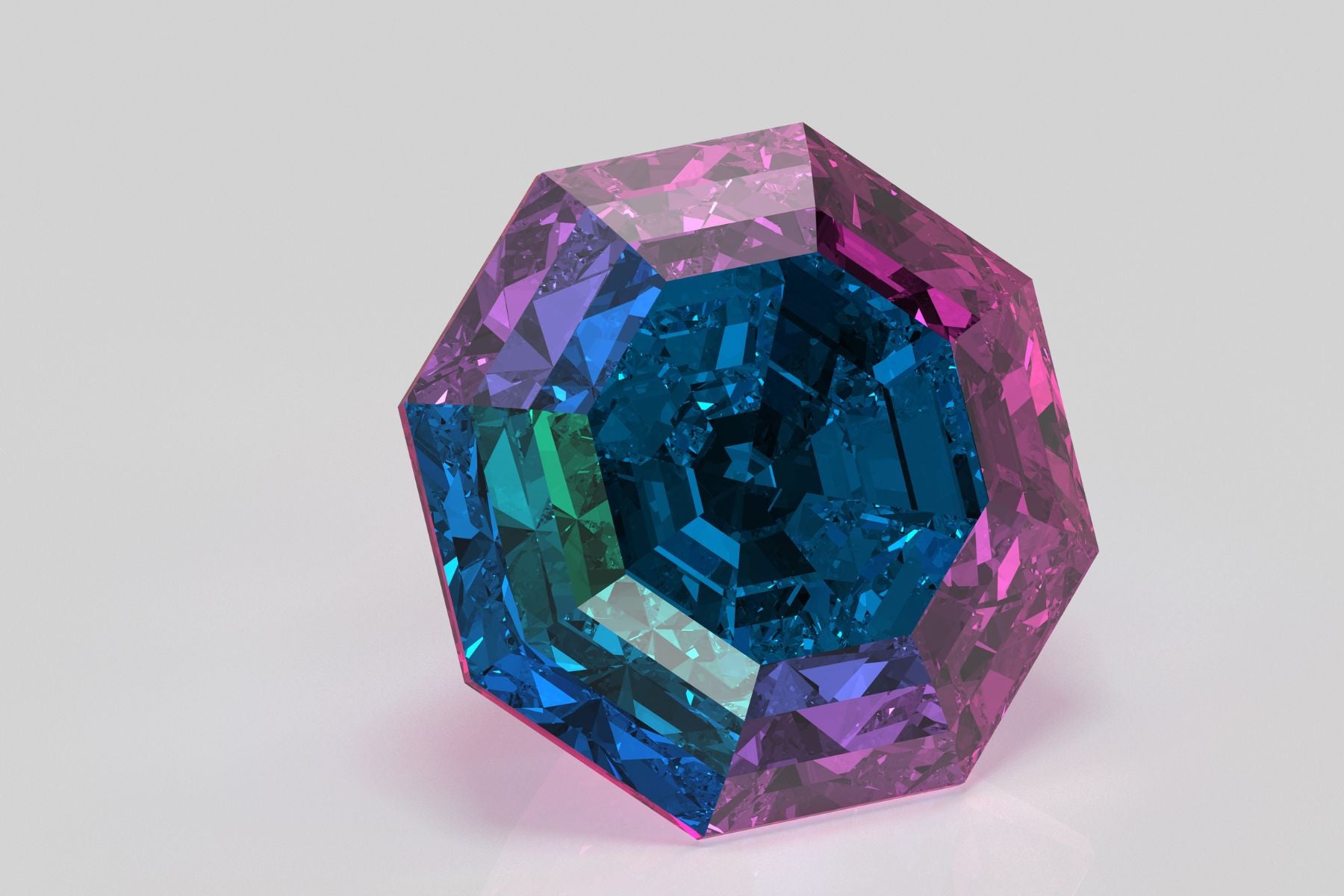
Caring for your alexandrite stone is essential to preserve its mysterious allure and durability. Here's how you can maintain your precious gem:
Cleaning Procedure
- Gently clean your alexandrite with mild soap and warm water.
- Use a soft cloth or a soft toothbrush to remove any dirt or grease.
- Rinse thoroughly to remove soapy residue.
- Avoid harsh chemicals, as they can damage the stone.
Handling Inclusions
- Alexandrite gems may have inclusions, which are natural.
- Handle with care to prevent any impact that could exacerbate these inclusions.
Light Exposure
- Alexandrite's unique color-changing property is best viewed under different light sources.
- Avoid prolonged exposure to direct sunlight, which could affect its color.
Storage
- Store your alexandrite separately to avoid scratches.
- A soft pouch or a fabric-lined jewelry box is ideal.
Avoiding Extreme Temperature
- Sudden temperature changes can be harmful.
- Do not expose your alexandrite to extreme heat or cold which could cause damage.
Routine Inspection
- Regularly inspect settings and mounts, especially if worn daily.
- Ensure prongs and settings are secure.
By following these guidelines, you can enjoy the camfire colors of your durable and mysterious gem for years to come. Remember, a little attention goes a long way in maintaining the beauty and value of your alexandrite stone.
Frequently Asked Questions
Alexandrite is a rare gemstone known for its remarkable color-changing ability and rich history. This section provides answers to common queries, revealing its spiritual significance, the impact of its color change on value, origins, benefits, zodiac associations, and its role as a birthstone.
What is the significance of the alexandrite stone in spirituality?
In spirituality, alexandrite is believed to bring balance between the physical and the spiritual world. It is often associated with enhancing intuition, self-esteem, and the ability to experience joy.
How does the color change in alexandrite stones affect their value and meaning?
The distinct color change from green in daylight to red in incandescent light not only significantly increases the stone's value but is also thought to symbolize the balance of opposites, echoing the human experience.
In which geographical locations is alexandrite commonly found?
Alexandrite can be found in Russia, which is its original and most famous source, but deposits have also been found in Brazil, Sri Lanka, and parts of Africa, including Tanzania.
What are the attributed benefits of wearing alexandrite gemstones?
Wearing alexandrite is said to promote emotional well-being by strengthening the wearer's ability to derive happiness and pleasure from life. It’s also believed to foster creative thinking and promote concentration.
Can alexandrite be associated with a particular zodiac sign, and if so, which?
Alexandrite is often associated with the zodiac sign Cancer, seen as a stone that can bring luck, love, and positive change to those born under this sign.
During which month is alexandrite recognized as a birthstone and what does it represent?
Alexandrite is recognized as a birthstone for June. It represents health and longevity, making it a meaningful gift for those celebrating June birthdays.
Checkout some of our top collections:
